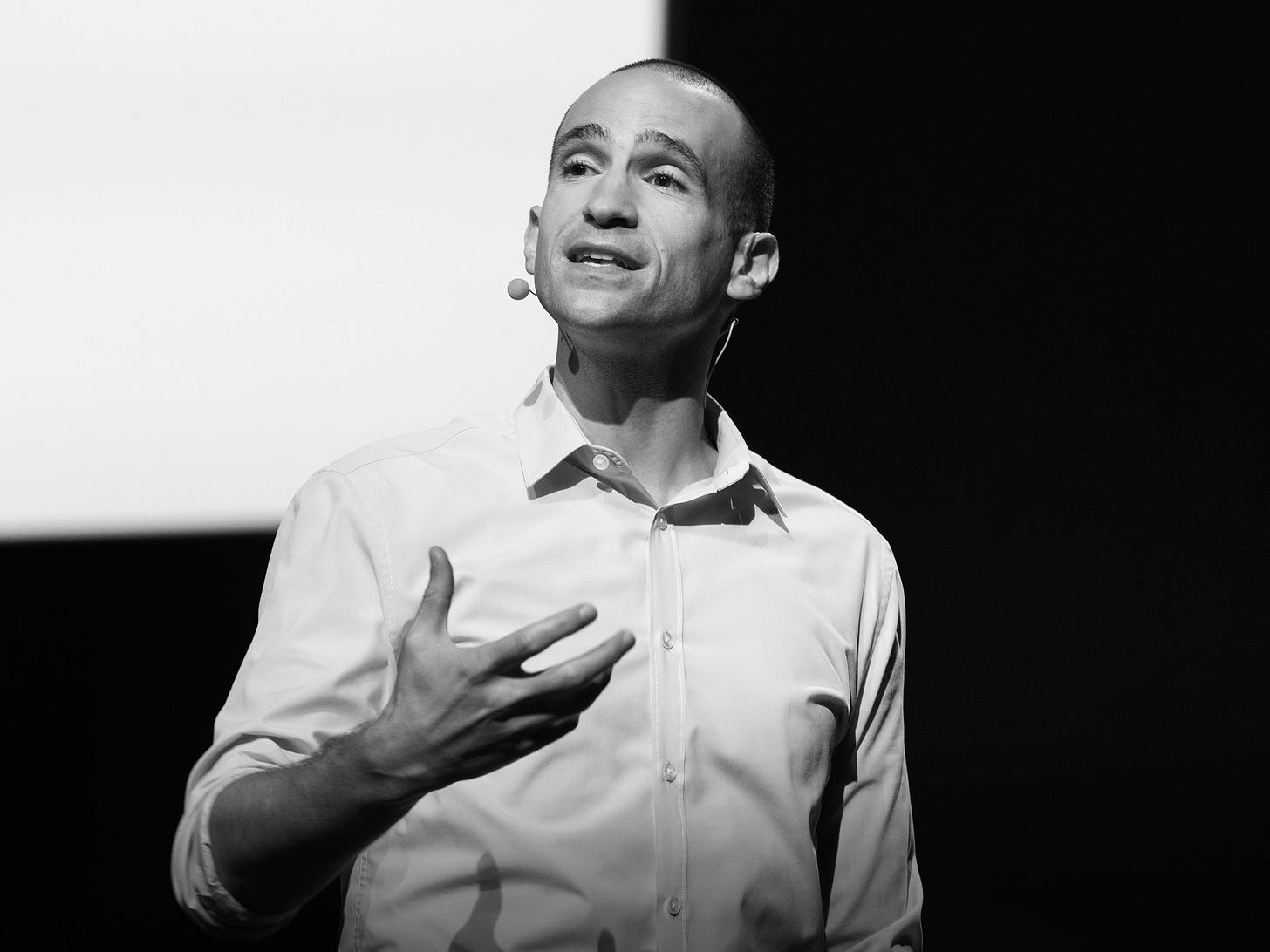How batching emails doubles your productivity (3-2-1 Method)
The average knowledge worker sends and receives 126 emails per day. 70% of emails are opened within six seconds of receipt. The never-ending task-switching that comes with doing so wreaks havoc on our productivity. Fortunately, there’s a better way.
What to do
Tackle your emails with 3 folders, 2 labels – and 1 hour of batched work per day.
Why it works
The best practice for processing emails is organizing them into three folders called “Action”, “Reading”, and “Waiting”. The “Action” folder is where emails go that need a response. The “Reading” folder is where you put emails that you want to read later, but don’t require a response (like this newsletter, I hope). And the “Waiting” folder is where you can keep emails for which you’re waiting on another person's action (hat tip to Ben Meer for bringing this system to my attention).
As Nir Eyal (pictured above) writes in Indistractable, the most important aspect of an email is when it needs a reply. By labeling time-sensitive emails accordingly, you’ll touch each email only two times – and never forget to take care of each of them. A great way to do just that is using two labels for time-sensitive emails: one label for “Today” and another for “This week”.
Lastly, checking and answering emails constantly will break your productivity. Even “just briefly checking” anything for a few seconds can create huge losses in productive time. As attention expert Gloria Mark has found in her groundbreaking research, work takes 50% longer when we’re continually switching tasks. This means that batching email instead of switching tasks leads to an increase in productivity of up to 100%.
Enter the 3-2-1 method.
How to do it
1) To get started with the 3-2-1 method, set up your folders and labels. Begin by creating a new email folder that you name “Pre-Sep 14” (or today’s date). Then, drag all your inbox emails into that folder. Don’t worry – you can process them later. Next, create the three additional email folders called “Action”, “Reading”, and “Waiting”. Also, set up two labels for time-sensitive email. As mentioned above, I use a red label for “Today” and an orange one for “This week”.
2) According to a recent study, 84% of people keep their email client open in the background all the time. Don’t be most people. Turn it off by default – and spend one hour of batched work per day on email. Break that hour into three, four or five sessions, depending on how responsive you need to be at work. I usually go for three 20-minute sessions at 10 am, 1 pm and 4 pm. Whenever you get to one of these sessions, open up your email client and get to work.
3) As new emails come in, go through the following three steps. First, organize incoming emails. Sort them into the “Action”, “Reading”, and “Waiting” folders – and archive emails that don’t fit into any of these. Also, label time-sensitive emails: add a red label to emails that require an action that day, and an orange label to emails that do so that week. Second, reply to emails in your “Action” folder. Start with the ones with a red label. As you go, archive the emails you’ve taken care of. Third, when you’ve made it through the “Action” folder and have some time left, work through the “Waiting” and “Reading” folders for the rest of the session.
By using the 3-2-1 method, you’ll stay on top of (urgent) emails, make time for the most important work each day, and double your productivity.
If you can think of one person who could benefit from doing the same, please share this post with them.
Until next week,
Christian
2 more ways I can help you
1) Becoming Ultracreative 1:1 Coaching Call
There has never been a better time to become a thought leader through LinkedIn. The platform is growing strongly and allows you to quickly build your distribution, monetization and recognition – thus becoming Ultracreative.
While coaching hundreds of entrepreneurs, executives, and CEOs on sustainable peak performance, my co-author Eric Partaker and I pulled this off in just 12 months. Our results: a 1+ million audience, a 7-figure business around it, and a book deal with Portfolio Penguin.
Most importantly, we’ve deconstructed what it takes to help you become Ultracreative, too — and packaged it into a 90-minute 1:1 coaching call. Learn more and book your call here.
2) Becoming Ultraproductive 1:1 Coaching Program
Are you struggling to focus on the important work being busy with urgent stuff? Are you feeling tired throughout the day despite sleeping for 7 or 8 hours at night? Are you having trouble dealing with high stress at work – and “switching it off” at home?
If so, check out our new Becoming Ultraproductive 1:1 coaching program. In it, I help executives, entrepreneurs and CEOs build rock-solid habits for deep focus, deep sleep, and mastering stress – and increase their productivity by up to 10x. That way, I’ve coached 60+ executives, entrepreneurs and CEOs on Becoming Ultraproductive since 2023.
The coaching program includes six 1:1 sessions with me over 12 weeks, tailor-made habit systems and handouts to optimize focus, sleep, and stress – and a guaranteed 100% increase in productivity. It is limited to ten seats at a time. If you’re interested in one of these seats, learn more and get in touch here.
PS: Interested in sponsorships for my newsletter and LinkedIn post?
Get in touch with me here.

